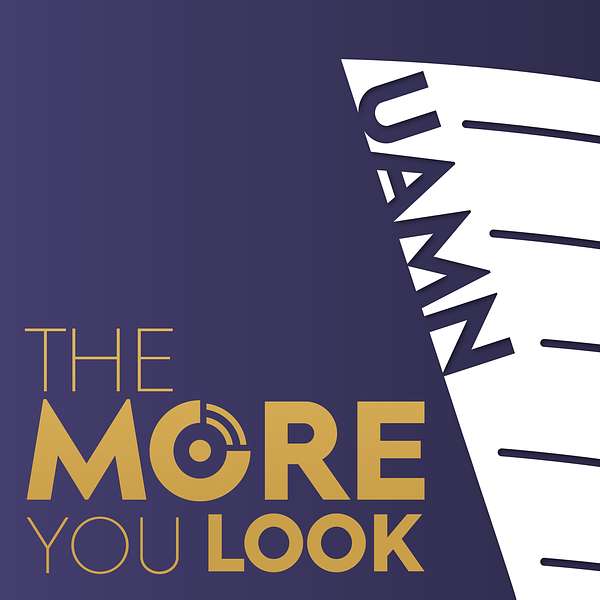
The More You Look
Welcome to The More You Look, a production of the UA Museum of the North and your behind-the-scenes journey into museum collections, research, exhibits, and public programming from Fairbanks Alaska. Join us as we talk about special exhibitions in development, and changes to look for in the permanent galleries. Not just the what, but the how and why. Learn about new programs and new ways to get involved. Curators will discuss the latest field season and collections managers what new finds have come to our labs to be cataloged, studied, and made available to researchers worldwide. We’ll get a look at major projects on the horizon and notable ones from years past. We’ll visit the museum labs–and field camps throughout Alaska and gain a better understanding of not only what this museum is within and without its walls, but quite possibly what discussions take place within any art and natural and cultural history museum that you might venture inside.
The More You Look is now also a KUAC FM radio show.
The More You Look
Threshold 32F
The museum’s latest exhibit in the Rose Berry Alaska Art Gallery, Threshold 32 Fahrenheit, is a collaboration between visual Artist Klara Maisch, writer Debbie Moderow, and ecologist Rebecca Hewitt. The exhibit is a multidisciplinary narrative about change in the boreal forest. It is as much about the process of collaboration and the development of community as it is the observance of the world and creation of art. Klara, Debbie, and Rebecca have worked together before, and began their collaborations under the In a Time of Change program. For our conversation, Klara and Debbie joined UAMN Director Exhibits, Roger Topp at the museum, while Rebecca called in from the U.S. East Coast.
The More You Look is a production of the UA Museum of the North, on the campus of the University of Alaska Fairbanks and the ancestral lands of the Dena people of the lower Tanana River. UAMN illuminates the natural history and cultural heritage of Alaska and the North through collections, research, education, and partnerships, and by creating a singular museum experience that honors diverse knowledge and respect for the land and its peoples.
